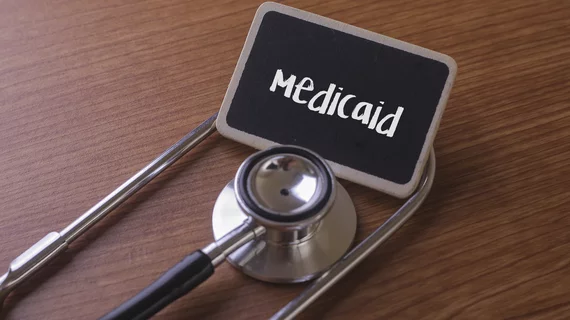New data highlight ‘massive gap’ between what Medicare, Medicaid pay for diagnostic imaging
New data from the Neiman Health Policy Institute highlight the “massive gap” between what Medicare and Medicaid pay for diagnostic imaging.
The nonprofit research outfit and American College of Radiology recently collaborated to better understand this challenge. They focused on 10 radiology-related procedures, calculating how much Medicaid reimburses as a percentage of Medicare payment.
The final product: heat maps from all 50 states on the Medicare-Medicaid gap, serving as a resource for radiology providers to improve their advocacy and better understand this issue.
“It is time to level the playing field for providers who treat Medicaid patients and for patients who do not meet the eligibility criteria or cannot afford other healthcare coverage options,” Casey E. Pelzl, senior economics and health services research analyst for the Neiman Health Policy Institute, wrote in a May 22 article published in the ACR’s Bulletin. “Not only will this ensure providers are being paid appropriately, but it will also facilitate access to preventive care, like cancer screening, for patients who so desperately need it.”
Pelzl et al. said the analysis has helped confirm the “dire situation,” with many states “severely deficient” in what Medicaid pays for professional fees. Reimbursement proved inadequate even in geographies with more than 25% of the population on Medicaid. Those include Alaska, California, New Mexico, Arkansas, Louisiana, Kentucky, West Virginia, New York, Vermont and Washington, D.C.
In Rhode Island, for one, 32% of the population is on Medicaid, in a state where professional rates are just 64% of what Medicare pays. The study also unearthed wide variation for specific procedures from one state to the next. In New York, Medicaid pays 59% of the Medicare rate for CT of the abdomen and pelvis. In Nebraska, meanwhile, the rate is 159%.
Pelzl and colleagues also highlighted a growing gap between Medicaid and Medicare since 2012. Ten years ago, payment for a single-view chest X-ray was nearly equal between the two payment programs in Rhode Island. But by 2022, Medicaid in the state paid only about 64% of the Medicare amount. In another example, Medicaid payment for an esophagram with upper gastrointestinal imaging was 98% and 99%, respectively, in Connecticut and Rhode Island. But by 2022, the Medicaid professional reimbursement is less than half of what was paid by Medicare.
“Together, state and federal governments need to find a way to narrow the massive gap between Medicare and Medicaid reimbursement to improve access to care rather than just access to insurance,” Pelzl and colleagues wrote.
You can read the full article in the Bulletin and find the graphics at neimanhpi.org/heat-maps-2022. ACR also highlighted the new data tool in a Thursday, June 1, news update.

